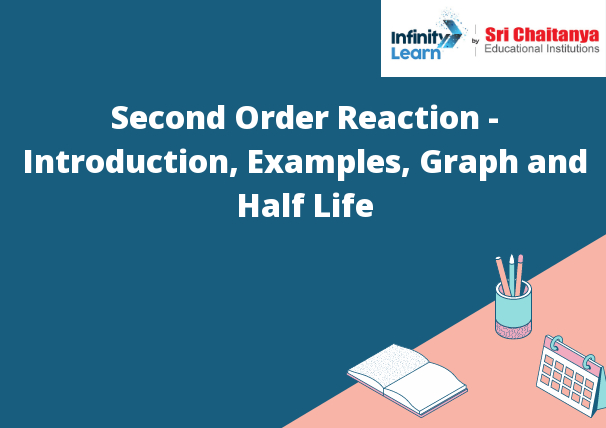Table of Contents
What is the order of chemical reactions?
Second Order Reaction – Introduction: The order of a chemical reaction is the sequence in which the reactants are consumed in the reaction. The order of a reaction can be determined by looking at the rate of the reaction. The rate of a reaction is the change in the concentration of the reactants over time. The order of a reaction can determined by looking at the rate of the reaction at different concentrations of the reactants. The order of a reaction can determined by plotting the rate of the reaction against the concentration of the reactants. The slope of the line will give the order of the reaction.

What is Second Order Reaction?
In a second order reaction, the rate of the reaction is proportional to the concentration of the reactant raised to the power of two.
Examples of Second-Order Reactions
- A second-order reaction is a chemical reaction that occurs as a result of the collision of two molecules. The molecules collide in such a way that their electrons rearrange to form a new molecule. This process known as a reaction coordinate. The new molecule known as a product.
- One of the most common examples of a second-order reaction is the formation of hydrogen gas from water. This reaction catalyzed by the enzyme hydrogenase. The reaction coordinate for this reaction is the transfer of an electron from one molecule of water to another molecule of water.
The Half-life of Second-Order Reactions
The half-life of a second-order reaction is the time it takes for the reaction to reach half of its initial value. The half-life can calculated using the following equation:
t 1/2 = ln(2) / k
Where t 1/2 is the half-life, ln is the natural logarithm, and k is the reaction rate constant.
he half-life of a second-order reaction given by:
t1/2 = 1/[A]
where [A] is the concentration of the reactant.
The rate of a second-order reaction given by:
rate = k[A]2
where k is the rate constant.
The half-life of a second-order reaction is inversely proportional to the rate constant. The rate of a second-order reaction is inversely proportional to the half-life. The half-life of a second-order reaction is proportional to the square root of the rate constant.
The half-life of a second-order reaction given by:
t1/2 = 1/k
where k is the rate constant.
The rate of a second-order reaction given by:
rate = k/[A]2
where [A] is the concentration of the reactant.







